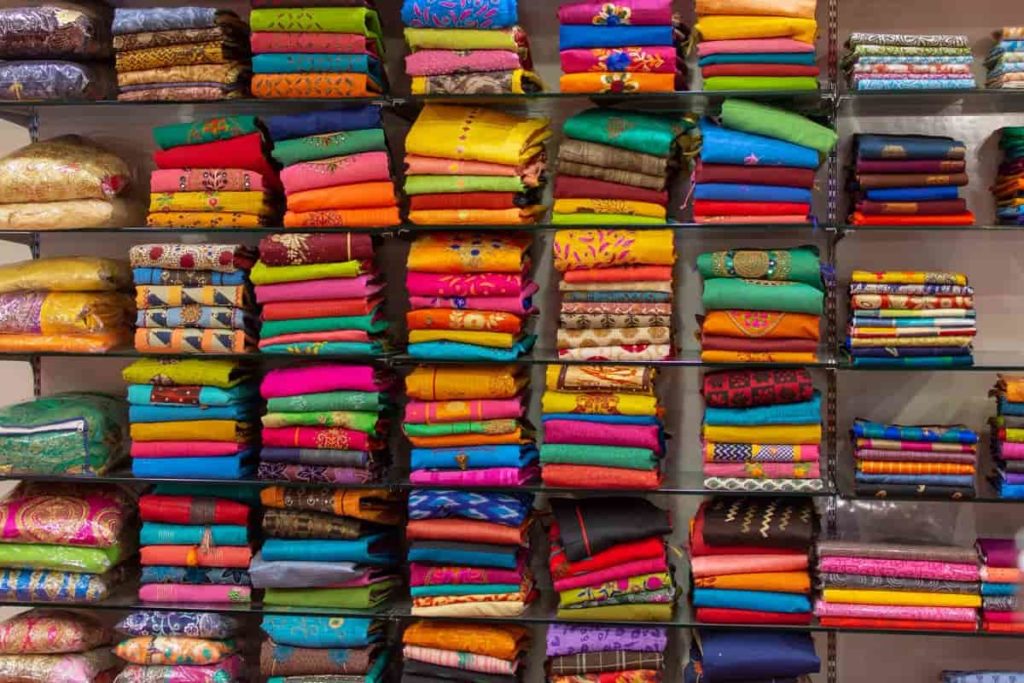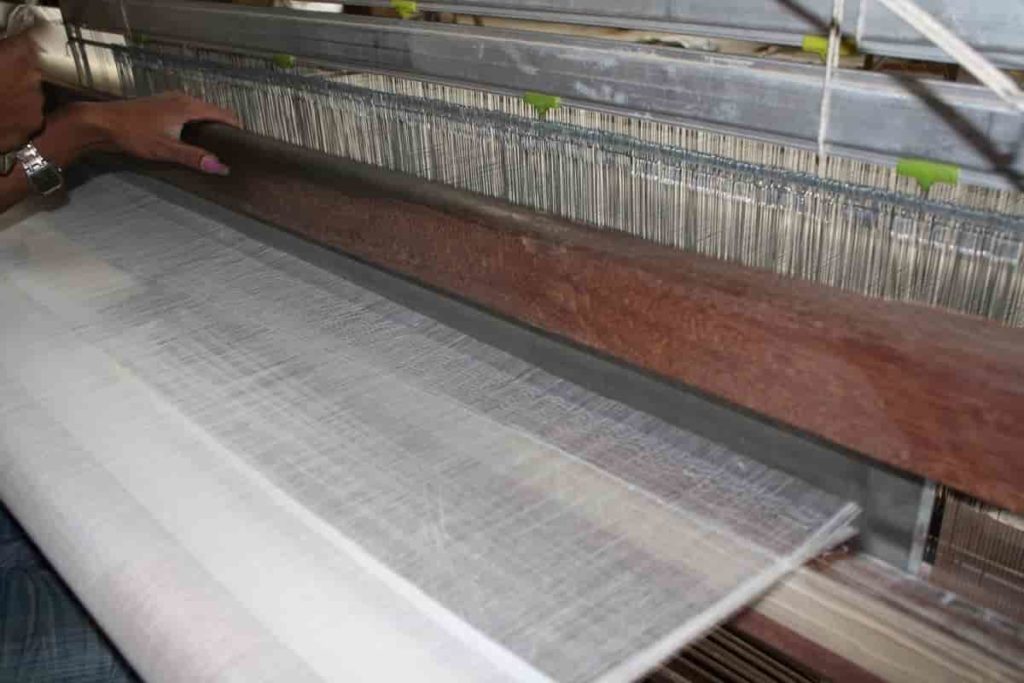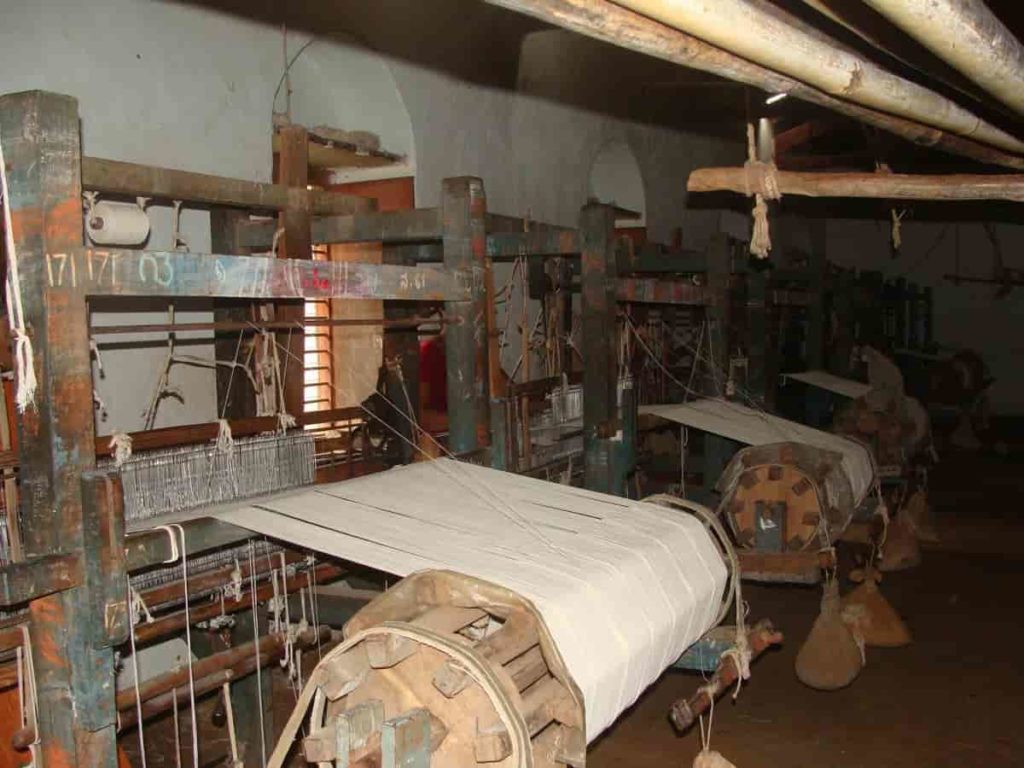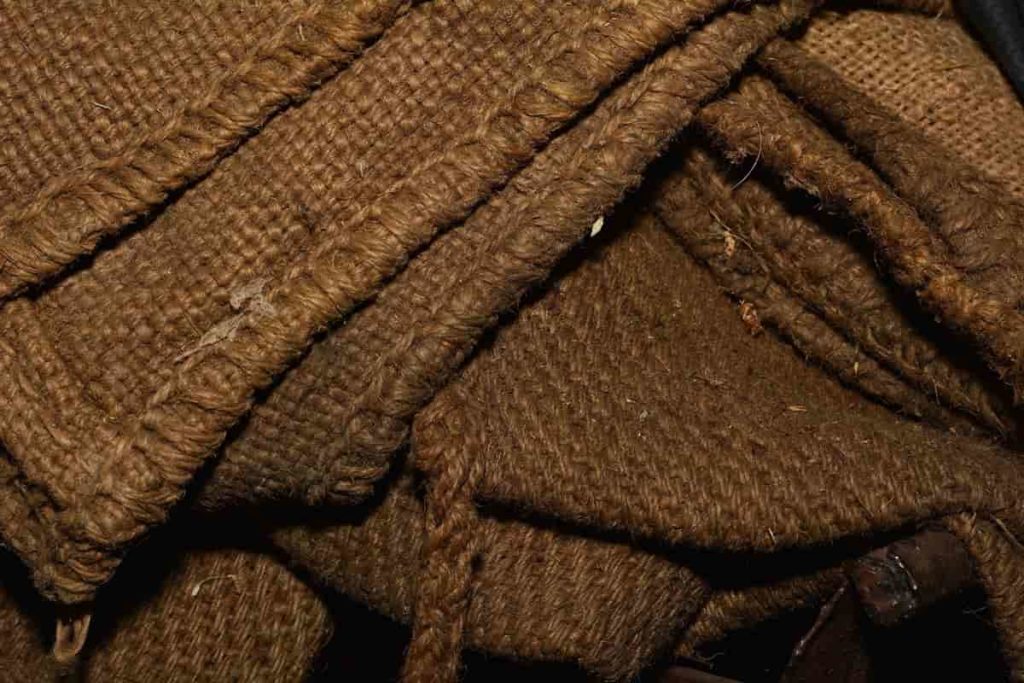Introduction to how to start khadi store in India: A Khadi and Village Industries Commission (KVIC) was created under the Ministry of MSME of the Government of India during the Khadi and Village Industries program in order to provide franchises to stock and market these products. Khadi India Outlets are the brand name and design of the Khadi franchise. We will examine the steps involved in setting up a Khadi Business in India franchise in this blog.

Khadi is a skin-friendly cloth that is handwoven, stitched, and hand-spun. KVIC is a legal body established by an Act of the Indian Parliament. In the rural areas, the KVIC is responsible for advertising, planning, industry, and implementation of curriculums for the development and expansion of Khadi Business Plans.
The term ‘Khadi’ was used all over India, Pakistan, and Bangladesh during the freedom struggle. Khadi is a type of natural fibre cloth, spun and stitched by hand. 1917-18 was the first year when the hand-woven cloth was produced at the Sabarmati Ashram, Ahmedabad. Gandhi called it Khadi because of the crudity of the cloth. Khadi is a cotton cloth that is typically hand-spun and woven. Silk or wool may also be included, which are spun into yarn using a spinning wheel known as a Charkha.
Guide on how to start khadi store in India, khadi business model, business plan, KVIC scheme for khadi business model, KVIC loan

Khadi business model
Khadi is both cool in summer and warm in winter, a versatile fabric. The addition of khaddar sometimes enhances its appearance and gives it a thicker feel. It is widely embraced by various fashion circles. Khadi cloth is used to create stylish dresses such as:
- Dhoti
- Kurta
- Handloom fabrics like Puttapaka Sarees, Kotpad Handloom fabrics, Chamba Rumal, and Tussar silk are used to make sarees.
The Padma Shri-winning artist Gajam Anjaiah is known for modernizing and creating various tie-dye handloom products as well as developing the Telia Rumal technique of weaving merchandise using the Ikat process. Here are a few ways to promote their products:
In case if you miss this: How to Start Construction Material Supply Business

- Organizing exhibitions and signing corporate memorandums of understanding
- Adding the ‘Khadi Mark’ to products
- By supplying Khadi to government and PSU authorities
- KVIC is capturing the international market with vigor and opening new outlets in order to advance the Khadi Business Plan and encourage its use and adoption
Since 2008-09, the Indian government has been providing loans to unemployed youth for promoting Khadi and Village Industries through a credit-linked subsidy scheme called Prime Minister’s Employment Generation Program (PMEGP). This scheme aims at generating micro-enterprises (SMEs) and job opportunities with Khadi Business Models.
Business plan required to start khadi store in India
KVIC’s headquarters is located in New Delhi, and its 6 regional offices are located in a few major cities of India, including New Delhi, Guwahati, Bhopal, Mumbai, Kolkata, and Bengaluru. Apart from these offices, there are 29 other offices located in several states to oversee the implementation of various programs in accordance with the commission’s objectives.
KVIC scheme for khadi business model
Under the KVIC scheme list, you can find multiple schemes aimed at achieving the goals for the commission.
KVIC PMEGP
A new scheme, PMEGP, was introduced by the MSME Ministry in place of Pradhan Mantri Rozgar Yojana (PMRY) and the Rural Employment Generation Program (REGP). The Prime Minister’s Employment Generation Program, or PMEGP, is a credit-linked support program intended to create employment opportunities for Indians throughout the country.
Interest Subsidy Eligibility Certificate (ISEC)
ISEC is designed to be the major source of information for all KVIC Projects regarding the organizations that are registered with the Khadi Business Plan (KVIC). By linking up the funding gap about budget allocations with funding from the banking system, the funding gap can be bridged.
Scheme of Fund for Regeneration of Traditional Industries (SFURTI)
Under the SFURTI Scheme, all Khadi and Village Industry products will be included in crowd development. The main agency involved in the program is KVIC.
Market Promotion Development Assistance (MPDA)
With MPDA’s assistance, local Indian artisans will be able to earn more income. The distribution of compensation is as follows: Artisans earn 40% of the compensation, Producers 40%, and Sellers 20%.
Khadi Reform and Development Program (KRDP)
Local artisans are expected to earn more and generate more employment through the KRDP scheme. Khadi is repositioned to fit current needs in this way.
In case if you miss this: How to Start Lip Balm Making Business at Home

KVIC loan
Those loans are routed through the commission and governed by PMEGP guidelines. A variety of criteria related to MSME specifications is used to determine financial assistance:
- Income Ceiling
- Margin Money
- KVIC Loan tenure (3 to 7 years)
- Funding Pattern (Urban, General, & Special Category)
- Per capita investment cap
- Quantum of Loan
Eligibility criteria for KVIC loan
Individuals and organizations that meet the eligibility norms can apply for PMEGP loans. Individuals above 18 years of age and have passed minimum 8th Standard: 10 lakh rupees for manufacturing units and 5 lakh rupees for service units. They haven’t taken out any other loans, according to Self Help Groups.
- Enrolled Societies
- Producer Co-operative Societies
- Other charitable trusts
- Loan eligible sectors- Under the KVIC scheme, loans are available only to the following sectors:
- Food processing (Agro-based)
- Service and textiles
- Biotechnology
- Forest products
- Mineral Products
- Hand-made fibres and paper
- Polymer & chemical products
- Rural engineering
- Documents Needed For KVIC Loan
Documents essential to the KVIC online application are listed in multiple lists.
- Different KYC documents of the borrowers.
- For eligibility in any of the specific categories, you will need to provide a certificate of caste or community.
- Subsidy claim as per eligibility.
- Authenticated copy of the bylaws of the society or association.
- Copy of the lease or rent contract for the premises or shed that is less than three years old.
- There will be a project report that will detail the costs with a breakdown of the capital expenditures and working capital requirements for one cycle.
- The bank’s controlling office will need to issue a certificate stating that there is no need for working capital.
In case if you miss this: 8 Profitable Manufacturing Business Ideas

Khadi Gram Udyog business list
Khadi Gram Udyog is a marketing department within the Khadi and Village Industries Commission (KVIC), which promotes a wide range of products in rural industries. Through the PMEGP (Prime Minister Employee Grantee Program), you can set up a Khadi Udyog-based company in India for a successful Khadi business.
As a beneficiary of the PMRGY (Pradhan Mantri Rojgar Guarantee Yojana), you will also be eligible for a 15% subsidy for the General Category, and a 25% subsidy if you are a member of the OBC, SC, ST, or Ex-Armed Forces. In urban and metropolitan areas, 25% of the subsidy is available for general categories and 35% for special categories. Khadi Gram Udyog Business List has started various schemes to boost the rural handicraft industry, including:
- Raw material assistance
- Rural craftsmen training (Training to artisans)
- Spinning subsidy
- Rebate on khadi cloth products
- Integrated cluster development programme
- Margin money
- Marketing assistance
- Technical training to board staff
List of products under Khadi Gram Udyog
Khadi Gram Udyog Business List includes the following products:
- Tribal Paintings
- Metalcraft
- Bamboo craft
- Jute
- Leathercraft
- Khadi
- Jewellery
- Papier Mache
- Handlooms
- Woodcraft
- Terracotta
In case if you miss this: Part-time Profitable Small Business Ideas

FAQs for setting up a Khadi Store
What are the steps required to open a Khadi store?
Ans- You will need all the terms and conditions in order to start a Khadi Business in India. Khadi and Village Industries Commission must sign a contract agreement before officially nominating the applicant as a franchisee for Khadi India Outlets. The businessperson can now begin selling Khadi and Village Industries products once the contract has been signed.
Does Khadi belongs to the Indian government?
Ans- The Khadi and Village Industries Commission was formed by Parliament in 1956 through the Khadi and Village Industries Commission Act.
Is Khadi a brand of Indian origin?
Ans- During the Indian independence struggle, Khadi was a brand created in India. It is hand-spun and hand-woven using a Charkha, these rugs are now becoming marketed all across the globe in order to reach a global audience.
How do I apply for the Khadi Udyog business?
Ans- The Khadi Udyog can be applied for through the Prime Minister Employment Generation Programme. Aadhar numbers, among other business-related items, need to be verified. If the khadi Udyog application is approved by the governing body after the application process has been completed, they will review your business details and approve your application.
What is KVIC?
Ans- The Khadi and Village Industries Commission (KVIC) was established under the Ministry of MSME of the Government of India during the Khadi and Village Industries program. KVIC provides franchises to stock and market Khadi and Village Industries.
What is KVIC terminology?
Ans- KVIC’s terminology is entirely based on the types of production. For a detailed understanding of the KVIC scheme, the following terms are useful:
- Khadi- Symbol of the Swadeshi Movement’s political weapon
- Cotton- Grown abundantly in Andhra Pradesh, Uttar Pradesh, Bihar & West Bengal
- Silk- Popular in West Bengal, Bihar, Odisha, and North Eastern states
- Wool- Known in Haryana, Himachal Pradesh, Jammu & Kashmir
- Poly- Mostly found in Gujarat and Rajasthan
- Handicraft Making at Home: A Small Profitable Business Idea
- Pet-Tech Startups: Innovations for Animal Lovers
- Tech Repair Services: Meeting the Demand for Gadget Maintenance
- Maximizing Rewards: Smart Credit Card Habits for Cashback and Points
- Ultimate Guide to Making Money from Goat Milk Business
- How to Start an Agricultural Value Added Product Business
- Value-Added Business Ideas for Greenhouse: The Best Ways to Make Profits with Greenhouse Farming
- How to Make Profits with Organic Country Chicken: Best Strategies for Beginners
- 10 Value-added Business Ideas for Millets: Low-investment and Highly Profitable
- Why Cleaning Service Business Becoming More Profitable in Metro Cities in India
- 10 Best Businesses to Start in Ayodhya for Profits
- Top Drone Business Ideas in India: Unlocking Aerial Innovation & Opportunities
- Top 10 Service Businesses You Can Start with No Money
- Ultimate Guide to Starting a Home-Based Advertising Agency Business
- Starting a Nail Salon Near Your Location: Check List, Business Plan, Licensing, and Opening Instructions
- Construction Company Name Ideas: Guide to Create New Construction Company Names
- 8 Best Small Businesses to Start in Hyderabad: Low-Cost and Profitable
- 10 Best Small Businesses to Start in Massachusetts: Low-Cost and Profitable
- 10 Best Small Businesses to Start in Maryland: Low-Investment and Profitable
- 10 Best Small Businesses to Start in Delaware: Low-Investment and Profitable
- 10 Best Small Businesses to Start in Connecticut: Low-Investment and Profitable
- Top 10 Best Online Pet Business Ideas: Exploring Cats to Dogs
- 10 Best Small Businesses to Start in Colorado: Low-Investment and Profitable
- Top 10 Profitable Small Business Ideas in California: Low-Investment Tips
- From Little Rock to Fayetteville: Top 10 Profitable Small Business Ideas in Arkansas
- Top 10 Profitable Small Business Ideas in Alabama: Discover Opportunities in Alabama’s Growing Cities
- Top 10 Profitable Small Business Ideas in Arizona: Discover Opportunities in Arizona’s Growing Cities
- Golf Business Ideas: Exploring Golf Course Money Making Ideas
- Low Capital Profitable Small Farm Ideas: Farming Ideas to Make Money
- How to Write a Business Plan for Daycare: Exploring from Financial Projections to Risk Management
- Home Daycare License Requirements: Exploring State-wise In-home Daycare Requirements
- How Profitable is Day Care Business: How Much Does a Daycare Owner Make a Month or Year?
- How to Open a Daycare Center in Toronto, Canada: Business Plan, Licenses and Permits
- How to Start Meal Prep and Delivery Services: A Popular Business Idea
- How to Start a Milk Chilling Plant Business
- How to Start Coconut Shell Charcoal Business: Business Plan for Maximizing Profits
How to open in khadi store in vadanagar
Hoe to invenst in this bussiness! Please reply